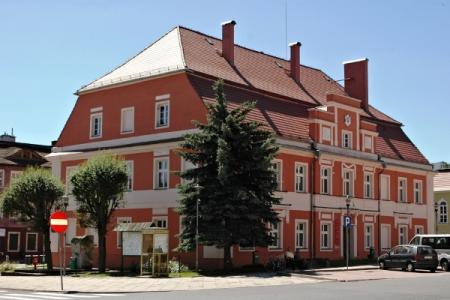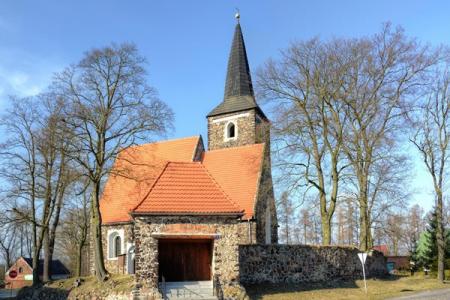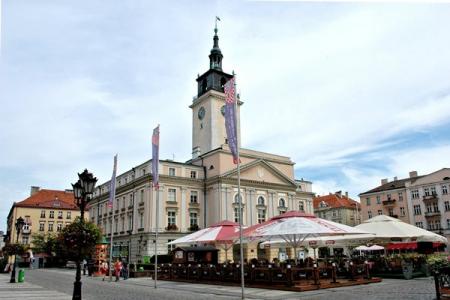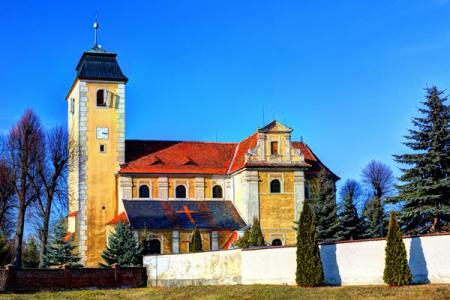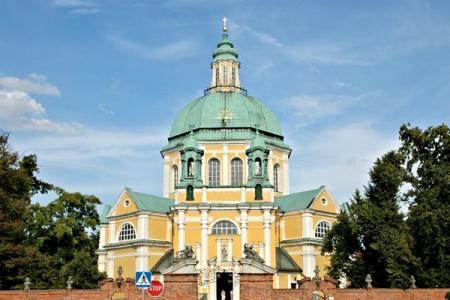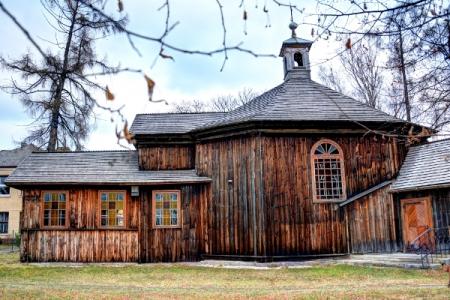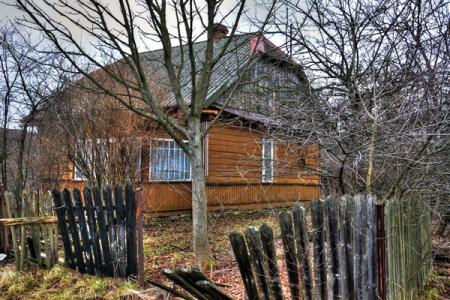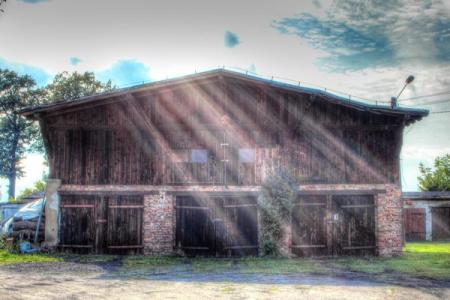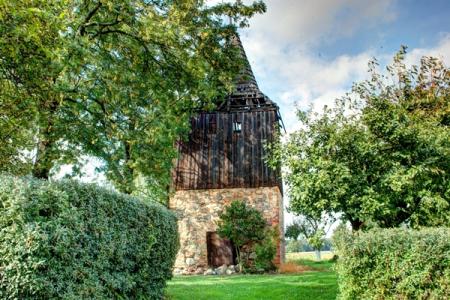
Architecture
Nowogrodziec (after war: Nowimburk, Germ. Naumburg am Queis)
Among numerous monuments of Nowogrodziec the following can be mentioned:
-Parish Church of St Peter and Paul – late baroque
-Ruins of a monastery
-Presbytery
-Town hall
-Mill
-Battlements
-Old evangelical church
-Church of St. Nicholas
-St. Joseph hospital
-Observation tower
Niwiska (Germ. Niebusch, Bergenwald)
In the village there are two churches (one desolate) and a palace.
Slightly camouflaged behind trees and bushes (next to Voluntary Fire Service) there are ruins of a protestant church built in XVIII century (and rebuilt in XIX for late-classical style). Till the late ‘60s it was a catholic church where masses were celebrated. The church is becoming more and more desolate after transferring the parish to the Church of Lady of the Rosary at the opposite side of the road. This church was built in the XIII century.
Brzeźnica
In the village there is a baroque church of St. Mary Magdalene, raised in 1703-1705. It comprises a rectangular tower adjoined which is a remaining of an earlier gothic temple.
On the tower there is a bell dated 1579. Inside the temple the artefacts of late baroque and a cross-barrel vault can be seen. Nearby you can find a baroque presbytery of 1676. In Brzeźnica there is also an electrical palace from the 2nd half of XIX century. It’s a couple-storey bulding.
Święta Góra Sanctuary - Gostyń
In 1468 on Święta Góra (Holly Mountain) a chapel to honour Our Lady was built. Due to the fact it was becoming more and more popular, a church was built on its place in 1512.
After Adam Florian Konarzewski was healed there he became the first founder of the today’s basilica.
Nowadays in Gostyń there is a breath-taking basilica of the Blessed Virgin Mary built in 1676 – 1698. The frescoes on its dome were built in 1746. The basilica was built in Italian-baroque style and based on the Venetian Santa Maria della Salute basilica.
Mroczków - Chapel St. Rocha
According to legend, the chapel was built at the turn of the sixteenth / seventeenth century on the place that the graves of the dead in thanks to God for the end of the plague.
In 1957, the chapel became a church, which in 1967 was expanded. From the site of the chapel of St. Rocha will see a new church.
Stara Jabłona
In the village of Stara Jabłona apart from the historic belfry is a manor and farm, from the mid-nineteenth century, which consists of: mansion, carriage house, barn, apartment building, gatehouse. All these monuments are in poor condition and falling into ever greater disrepair.
